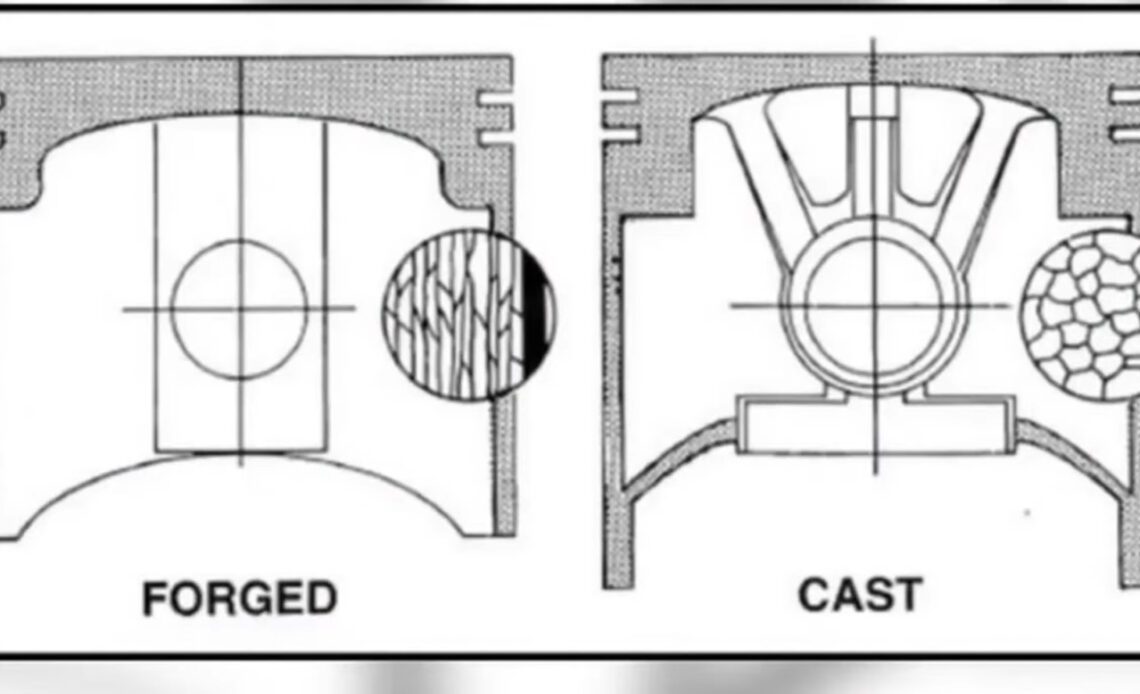Piston selection is a critical step in the engine design process, and you need to think beyond just the size of the slugs you’re going to load into the cylinders. The two main types of pistons available for a high-performance application are cast and forged. Do you know the difference between the two, and why it’s important? If not, sit back as we cover these two piston types with MAHLE Motorsport.
The biggest difference between cast and forged pistons is how they’re made. Cast pistons are created by taking molten aluminum and pouring it into a mold to form the piston. Forged pistons start life as a solid piece of aluminum and are heated, then formed into shape via compressive force in a press.
From a price standpoint, the cast piston is going to be cheaper and lighter, but it won’t be as strong. The forged piston will be heavier, but it will be stronger and is typically the piston of choice for big-horsepower, boosted, and high-RPM applications.
So, what makes the forged piston better for high-performance applications over cast? It comes down to how the grain flow of the material is arranged. The cast piston’s grain flow isn’t directionally aligned like the forged piston, so it isn’t as strong. This is because the cast piston is made with a molten mixture of metal, versus the forged piston that’s made of one single piece of material. The forged piston’s material can also be selected from specific stock to create an elevated level of strength.
If you have questions about which type of piston is best for your application you can reach out to the team at MAHLE Motorsport right here….they’ll be happy to assist you with selecting the right piston.
Click Here to Read the Full Original Article at DragzineDragzine…

